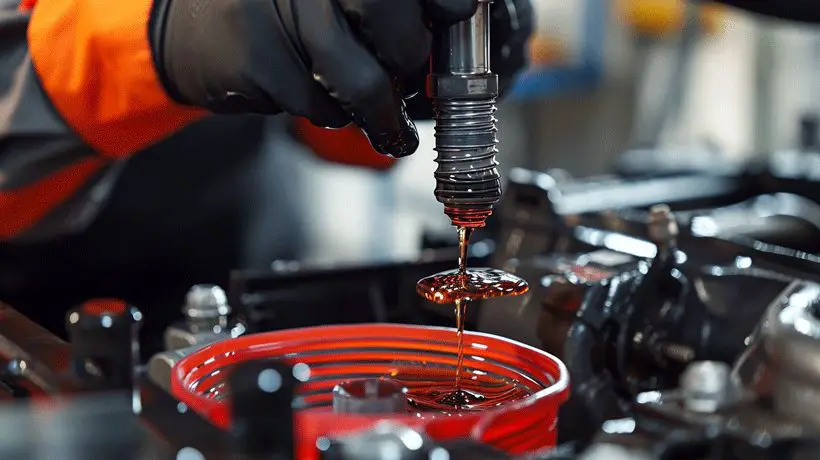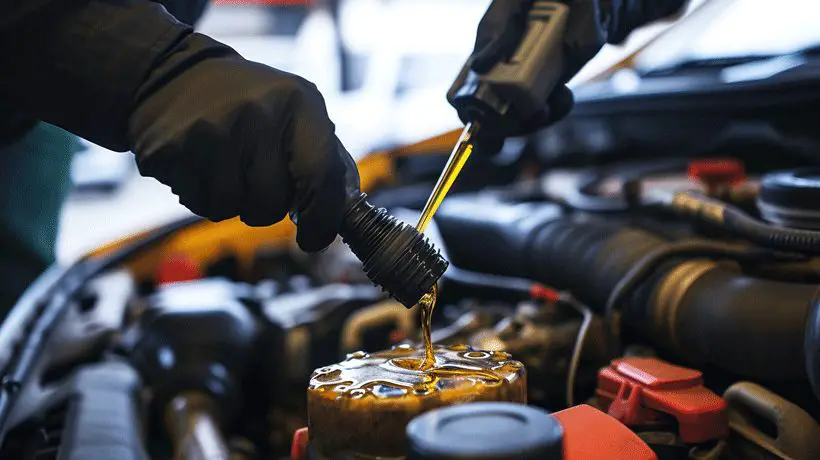Changing your car’s automatic transmission fluid (ATF) is essential for keeping your vehicle running smoothly. I’ve learned that regular fluid and filter service can prevent costly repairs down the line. It’s a task that’s often overlooked, but it’s crucial for maintaining your transmission’s health.
Why Should You Change Your Automatic Transmission Fluid?
As a seasoned car owner, I’ve learned that transmission fluid is the lifeblood of the automatic transmission system. This fluid serves multiple vital functions:
- Lubrication: It ensures that the moving parts within the transmission are slippery enough to move freely without damage.
- Cooling: It dissipates heat generated by the friction of moving parts.
- Power Transmission: It transmits energy from the engine to the wheels.
- Contaminant Removal: It helps to transport dirt and metal shavings out of the transmission to be caught by the filter.

Over time, ATF degrades due to heat and accumulation of contaminants. If not changed, old fluid can lead to several problems:
- Increased Friction: Worn-out fluid can’t lubricate as well, causing increased wear on components.
- Overheating: With its cooling properties diminished, the system is prone to overheat, which can cause severe damage.
- Poor Performance: Contaminants in old fluid can clog passages and reduce hydraulic pressure, leading to sluggish shifting and poor acceleration.
- Higher Repair Costs: Neglecting ATF changes can result in the need for a costly transmission rebuild or replacement.
Here’s what happens when you delay changing your ATF:
| Consequence | Description |
|---|---|
| Sludge Formation | Old fluid turns into sludge, clogging the transmission’s inner workings |
| Component Wear | Critical components wear out faster due to inadequate lubrication |
| Erratic Shifting | The transmission fails to shift gears smoothly, causing a jerky ride |
| Transmission Failure | Worst case scenario: complete transmission breakdown |
Changing your transmission fluid regularly is paramount for keeping your vehicle in tip-top shape. The recommended interval varies by make and model, but a good rule of thumb is every 60,000 to 100,000 miles. However, if you regularly drive in harsh conditions, such as towing or in extreme temperatures, consider more frequent changes. Always consult your vehicle’s manual for the most accurate maintenance schedule.
Next up, I’ll walk you through the process of changing the ATF yourself. It’s a straightforward procedure that can save you a trip to the mechanic and extend the life of your vehicle.
Signs that Your Automatic Transmission Fluid Needs to be Changed
When it comes to maintaining your car, being proactive about changing your automatic transmission fluid (ATF) is crucial. I’m here to help you identify the warning signs that indicate it’s time for a fluid and filter service. Keeping an eye out for these symptoms can prevent more severe issues down the line.

Unexpected Gears Shifting: If you’ve noticed your transmission slipping into gears or shifting at unusual times, this may signal that your ATF is deteriorating.
Unusual Noises: A healthy transmission should operate fairly quietly. Listen for whining, clunking, or humming sounds when your car is in neutral. These could be cries for a fluid change.
Transmission Fluid Leaks: Spotting a puddle under your car? If it’s reddish and oily, you’re likely looking at a transmission fluid leak. Not only does the level need to be checked, but new fluid might also be necessary to ensure proper lubrication and function.
Dirty or Smelly Fluid: Checking the fluid yourself can reveal a lot. If the liquid is dark, cloudy, or has a burnt smell, it’s not providing adequate protection or performance.
Delayed Engagement: When shifting from park to drive, a delay before the car engages and moves forward is a telltale sign. Good fluid conditions should allow for prompt gear engagement.
Warning Light Activation: Modern vehicles have sensors and a dashboard warning light for transmission issues. If this illuminates, it often points toward a fluid-related problem.
Here’s a quick reference table summarizing the signs:
| Sign of Needing ATF Change | Description |
|---|---|
| Unexpected Gear Shifts | Gears change randomly/erratically |
| Unusual Noises | Whining/clunking in neutral |
| Fluid Leaks | Reddish, oily puddles under car |
| Dirty/Smelly Fluid | Dark, cloudy, or burnt odor |
| Delayed Engagement | Hesitation shifting from park to drive |
| Warning Light | Dashboard indicator for transmission problems |
Paying attention to these alerts and scheduling a fluid change can increase your transmission’s lifespan. Learning how to change your ATF is not only empowering but can also be a cost-effective solution to keeping your car in top shape. Let’s dive into the practical steps you can take to perform this maintenance task yourself.
Tools and Materials You’ll Need
Before diving into the ATF change, it’s crucial to gather the right tools and materials for the job. Having everything on hand will make the process smoother and prevent any mid-task interruptions.
Here’s what you’ll need:
- Floor jack and jack stands: To safely lift and support your vehicle.
- Socket set: For removing bolts on the transmission pan.
- Torque wrench: Ensuring bolts are properly tightened.
- Drain pan: To catch the old fluid.
- Funnel: To pour new ATF without spills.
- New ATF: Make sure it matches your car’s specifications.
- Replacement transmission filter and gasket: Essential for a full service.
- Clean rags: To wipe away any mess.
- Gloves: To keep your hands clean and safe.
Ensure you have the following items:
- Safety glasses: Protect your eyes from fluid splashes.
- Disposable coveralls or an old outfit: ATF can stain clothing.
- Flashlight or work light: Providing visibility in low-light conditions.
If this is your first time performing an ATF change or if you’re not mechanically inclined, a service manual for your vehicle can be crucial for providing detailed instructions and torque specifications. Some vehicles may require special tools, such as a transmission fluid pump or adaptor, for uniquely designed systems.
Remember to refer to your vehicle’s owner’s manual for the exact type of ATF required. Using the wrong fluid can lead to subpar performance or even damage. The amount of ATF needed can vary depending on whether you’re also changing the filter or just performing a partial fluid change.
For the most precise work:
- Have your service manual accessible.
- Always follow the manual’s torque specifications using your torque wrench.
- Measure the amount of fluid drained to help estimate how much new ATF to add.
By preparing with the right tools and materials, you’re set to carry out the ATF change effectively. It’s an opportunity to get to know your vehicle better and ensure its longevity.
Step-by-Step Guide to Changing Your Automatic Transmission Fluid

Before beginning the ATF change, I ensure all necessary tools and materials are within reach. Here’s what I typically do for a smooth and effective ATF change process:
- Warm up the engine for a few minutes to help the fluid drain more easily.
- Once warmed, I shut off the car and apply the parking brake for safety.
Preparation:
- Position the drain pan under the transmission to catch the old fluid.
- Use the correct socket to remove the transmission drain plug and allow the fluid to drain. On some models, I might need to remove the transmission pan instead.
Draining the Fluid:
- Keep an eye on the draining fluid for any signs of debris or metal shavings, which could indicate internal wear.
- After the fluid has drained, I remove the transmission filter or screen. It’s essential to note how it’s installed to ensure proper replacement.
Replacing the Filter:
- I clean the transmission pan thoroughly with a solvent to remove any residue and old gasket material.
- Before installing a new filter, I make sure it’s identical to the old one and fits perfectly in place.
Refilling with New ATF:
- To begin with, I reinstall the transmission pan with a new gasket and torque the bolts to the manufacturer’s specifications.
- Through the transmission dipstick tube, I slowly add the recommended type of automatic transmission fluid.
- I consult the service manual to confirm the required quantity.
Checking Fluid Levels:
- After adding some fluid, I start the engine and let it run for a couple of minutes. This circulates the ATF through the system.
- With the engine idling, I check the ATF level using the dipstick and add more if needed to reach the full mark.
Test Drive and Monitoring:
- I take the car for a short test drive to ensure the transmission operates smoothly.
- Upon return, I check the fluid level once more and inspect for leaks under the car.
Throughout this process, I’m mindful not to overfill the transmission, as this could lead to frothing and erratic transmission behavior. I also make a note of the mileage at which the service was performed to keep track of when the next change is due. Remember, attentive maintenance is key to any vehicle’s longevity and performance.
How Often Should You Change Your Automatic Transmission Fluid?
Knowing when to replace your automatic transmission fluid can save you from costly repairs down the line. Manufacturers often suggest a range of service intervals, but these can vary based on your driving habits and the type of vehicle you own. I’ll break down the factors that influence ATF change frequency and offer a general timeline to help you keep your car in top condition.

Regular Maintenance Schedule
Most carmakers recommend changing your automatic transmission fluid every 30,000 to 60,000 miles. However, if you frequently drive under severe conditions, you might need to change the ATF earlier.
Severe conditions include:
- Frequent stop-and-go traffic
- Driving in extreme temperatures
- Heavy towing or hauling
To gauge what’s best for your car, consult your owner’s manual for the manufacturer’s recommendation. Remember, adhering to this schedule is pivotal for maintaining your vehicle’s performance.
Vehicle-Specific Recommendations
It’s crucial to understand that different vehicles have unique needs. For instance, older models might require more frequent ATF changes compared to newer ones that sometimes boast ‘lifetime’ fluid that theoretically doesn’t require changing. Still, ‘lifetime’ is often considered to mean 100,000 miles, as transmission fluid degrades over time regardless of the vehicle.
Monitoring the ATF Condition
Aside from mileage, pay attention to the ATF’s condition. If you notice the fluid is darker than its original bright red color, smells burnt, or your transmission begins to behave erratically, it’s likely time for a change. It’s instances like these that your attention to detail pays off in prolonging your transmission’s life.
ATF Change Intervals Table
To simplify, here’s a quick reference table for ATF change intervals:
| Driving Conditions | Recommended ATF Change Interval |
|---|---|
| Normal Conditions | Every 60,000 miles |
| Severe Conditions | Every 30,000 miles |
| Manual Checkup Suggests | As per observation |
Monitoring your transmission’s behavior and fluid condition is as important as sticking to a mileage schedule. By staying vigilant and responsive to your car’s needs, you can ensure you’re giving your vehicle the care it deserves. And while you’re keeping an eye on your ATF, don’t forget to check other fluid levels and components that may also require attention as part of your regular car maintenance routine.
Conclusion
Mastering the art of changing your automatic transmission fluid ensures your vehicle runs smoothly and extends its lifespan. I’ve walked you through the essential steps and shared the importance of adhering to schedules and using the right ATF. Remember, staying on top of this task can prevent costly repairs down the road. Trust me, your car will thank you with better performance and reliability. So don’t hesitate to roll up your sleeves and give your vehicle the care it deserves. And when it’s time for the next change, you’ll be ready to do it all over again with confidence.
